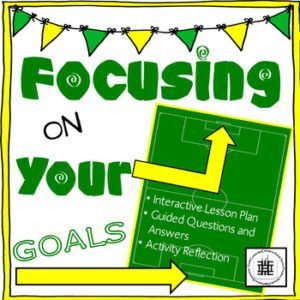The start of the new year is the ideal time to reflect and begin setting goals for the remainder of the school year. These can be goals for professional growth, counseling or advisory groups, individual counseling treatment plans, or suggestions you have received from your principal, teachers, or colleagues.
For years, I have worked in a variety of settings developing curricula, facilitating counseling and advisory, as well as, facilitating push-ins to classrooms for life-skills. I have frequently been asked if I can create a 30-minute lesson that teaches every student to set goals in an effort to pass their classes and graduate?
After I have a good laugh in my head and hold myself back from commenting that the lesson will include a magic wand, I explain that we can create the lesson, but in order to effectively facilitate a session on goal setting it will take more time than 30 minutes to ensure all the students grasp the necessary steps toward achieving their goals.
The objective is to have our students master the skills and understandings required for developing and achieving their goals. Over my career, I have developed a scaffolded method that allows teens and young adults to begin to understand and implement the skills that they need to be able to accomplish their goals.
Think about it. If goal setting were easy to do, everyone would set and achieve their goals! Even as adults, we can struggle with this. It can also be quite time-consuming to work one-on-one with every student or participant, especially if you are in a setting with a large population. Students have different learning abilities and needs, so it is important to break down these skills into a step-by-step guide in order to aid students in understanding the process.
I have created a helpful and comprehensive way to work with students in a group setting or whole class push-in. This will help lessen the time you need to teach these skills to all of your students. I make the activities fun and engaging using concrete tasks and meaningful real-life situations. Participants will learn the skills they need now and in their future to successfully meet goals.
Follow the steps below to teach your students the skills they need to develop and achieve their goals at their pace rather than in a one size fits all model.
Students should learn:
The Importance of Focusing on and Setting Goals
To gain buy-in, students will benefit from understanding what can happen when they have a clear idea of their goals. How can this goal impact their lives? This can be useful in planning out the steps they will use in attaining their goals. Ask the students, “What is your payoff for achieving this goal?” “How will you reward yourself once you accomplish your goal?”[su_spacer]

How to Explore and Identify What Motivates Them
Students may not have had positive examples of motivated people in their lives. Facilitate an engaging activity and invite conversations that help identify the students’ motivation to accomplish their goals and what the payoffs are once their goals are met.[su_spacer]
How to Identify Different Types of Goals and the Goal Subject
You want students to be able to distinguish between long- and short-term goals. Emphasizing short-term goals and reviewing examples will help students feel more in control and less overwhelmed in reaching their longer-term goals.
Goal subjects can include: academic, career, family, health and wellness, financial, and social-emotional goals. This step will help with planning how they will achieve their goals.[su_spacer]
Identify the Goal and Make it Measurable
Once the students decide on a long-term goal they each want to set, guide them to choose their short-term goals. Create S.M.A.R.T. goals so that they will be able to later evaluate the impact of their met goals. [su_spacer]
Be Prepared for Obstacles
This is an area often overlooked and may set-up the students for failure if it is not discussed. Review with the students the possible barriers that may come before they can reach their goals, and help them come up with solutions and backup plans.[su_spacer]
Follow-Up
Goals can take a long time to reach, and it, therefore, becomes important to check-in and make sure that these steps are being met. This process takes time and needs continuous and consistent follow-up to be effective.
Have students reflect on and evaluate their progress toward meeting their goals with the help of a checklist. They will visually note what they have accomplished and what they need to continue working on.
Teach the students accountability by encouraging them to share their goal progress, including challenges and solutions. For example, I have a student whose long-term goal is to graduate. He visits the office daily and announces that he had attended all of his classes for the day. Even though he has the urge to skip class, this was the first step he chose to accomplish his goal.
After several group sessions, the students will able to see some progress, develop healthy habits for setting goals, and be able to create and set goals for themselves in the future.
What activities have you used to help students achieve their goals?
Other Confident Counselors Posts on Setting Goals
Conversations: How do you set goals in counseling?
Why you should be using SMART goals in counseling from Social Emotional Workshop

